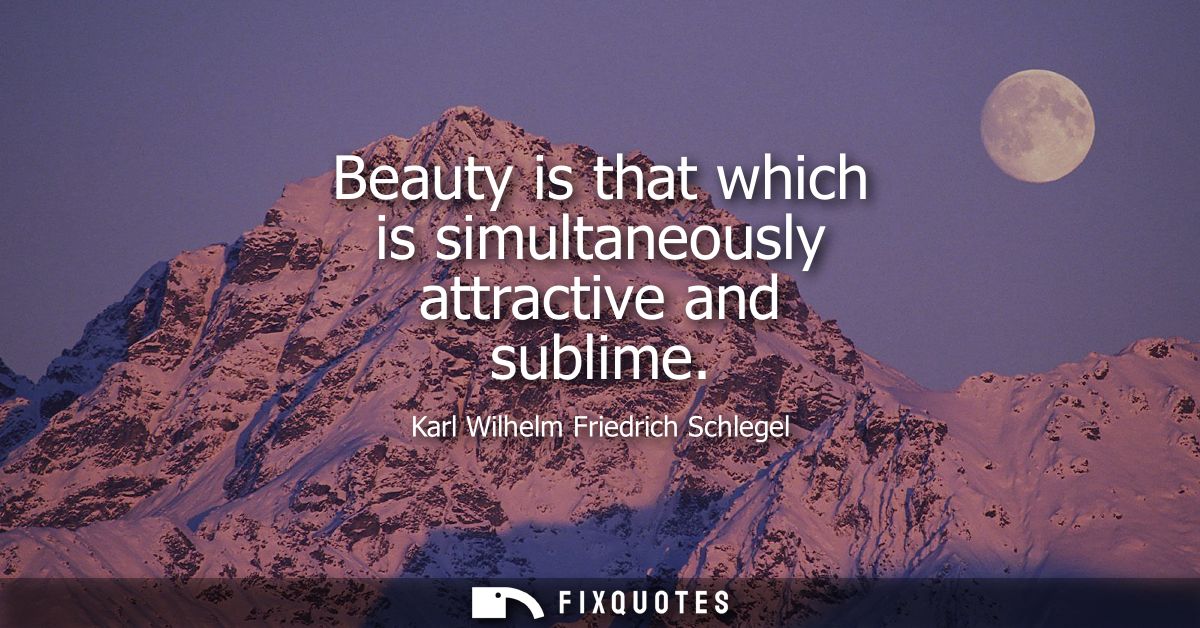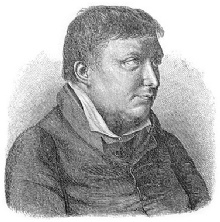"Beauty is that which is simultaneously attractive and sublime"
About this Quote
Schlegel fuses two strands of aesthetic experience that are often treated as opposites. The attractive is what welcomes: clarity, symmetry, melody, the felt ease that draws the eye and opens the heart. The sublime is what exceeds: magnitude, darkness, danger, the vertigo that arises at the edges of comprehension. Beauty, then, is not mere charm and not pure terror, but the charged frontier where invitation meets transcendence.
Consider a coastline at dusk. The colors soothe, the rhythm of waves lulls; yet the sea’s depth and power overwhelm calculation. Or a Gothic cathedral: ornament invites lingering, while the vertical thrust and cavernous space make the soul feel small and somehow enlarged. Even a human face can carry this duality, familiar warmth coupled with an unfathomable interior life. When both elements co-present, perception vibrates; the mind is drawn closer even as it recognizes a remainder that cannot be mastered.
This vision resists reduction to technique or prettiness. The merely attractive can cloy; the merely sublime can numb. Beauty keeps the door open while guarding a mystery. That double motion explains why great art sustains repeated attention: it offers paths in, pattern, narrative, craft, while withholding a core that compels return. It also suggests an ethical dimension: to find something beautiful is to approach with affection and with respect, neither consuming nor fleeing.
Design and technology illustrate the balance. A device that is sleek yet opaque invites suspicion; a tool that is powerful yet hostile repels use. When form delights and the horizon of possibility inspires, users feel both at home and enlarged. Contemporary culture often prizes the instantly likable or the shockingly grand; Schlegel asks for their tension. Beauty happens when the approachable gestures toward the immeasurable, when solace and awe conjoin, when what we can love leads us beyond what we can grasp.
About the Author

